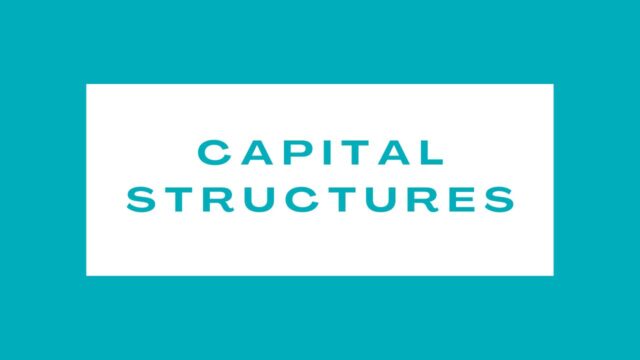
When a company is evaluating its capital structure, there are several factors to consider, including debt level, the tradeoffs between debt and equity financing, the cost of debt, and the optimal capital structure. For example, a company with an optimal capital structure of 22.5% debt and 77.5% equity should not alter its capital structure due to minor differences. This is because changing the capital structure of a company will result in significant transaction costs.
Debt-only capital structure
The optimum capital structure is crucial to a company’s operation and management. As every penny invested is a cost, a company must find a way to return that money to its equity holders. Cost of equity refers to the return offered to equity holders in proportion to the risk they assume in the company. Cost of debt refers to the interest that a company pays on its debts.
The optimal capital structure maximizes shareholder returns while minimizing the company’s weighted average cost of capital. It is an inverse relationship between market value and WACC. It can increase a company’s value by avoiding excessive debt levels and concentrating shareholder wealth in a small, closely held private company. Debt is not mandatory, but its optimal capital structure helps investors to invest in the company without incurring excessive debt.
Trade-offs between debt and equity financing
Debt and equity financing differ in risk, benefits, and repayment terms. Debt allows a business to borrow money, while equity provides capital for the business. Debt has some benefits, such as being less expensive and offering longer repayment terms. In addition, debt is easier to convert into equity, whereas equity cannot be converted into debt. Debt also carries a fixed interest rate, which can be a disadvantage for a business looking to avoid interest payments. However, debt allows a company to keep money for a limited time, while equity is a permanent asset. Equity financing allows for dividends to be paid when the company makes profits, and is therefore more stable.
Debt and equity financing both come with their pros and cons, and the decision to go with one or the other will depend on your business’ needs. The pros and cons of each are discussed below. Make sure you fully understand the pros and cons of each type before deciding which one is right for you. In addition, make sure you understand the risks associated with each type of financing. You’ll be better off determining your business’ needs and requirements by investigating your industry’s norms, competitors, and financial products. When choosing between debt and equity financing, make sure that the process is legal and that you retain control.
Optimal debt level
The optimal debt level in a company’s capital structure is the amount of debt that maximizes the value of the firm. It also determines the weight of debt within the target capital structure. The optimal debt level depends on the market values for equity and debt at any given time. Because market values vary from day to day due to economic conditions, there may be slight variations in the calculations every day. To help CFOs make the best decisions, these questions are worth considering.
The optimal capital structure of a company is a combination of debt and equity financing that maximizes the market value of the company while minimizing the cost of capital. Debt is more affordable than equity, and the interest associated with it is tax deductible. However, excessive debt increases the risk of default and reduces the value of a company’s stock. Therefore, it is important to determine an optimal debt level for a company based on several factors, including its expected return and the risk associated with default.
Cost of debt
Debt is much cheaper than equity and has lower risks. However, borrowers must pay back both the loan and the interest. The cost of debt is determined by the ratio of debt to equity, which is 5:95. The lower the ratio, the lower the cost of debt. If you borrow at a high interest rate, you will pay more in interest than you would have if you had borrowed equity. You should consider the opportunity cost of an unsecured debt and its tax implications.
When you determine the optimal capital structure for a business, you have to consider the cost of debt versus equity. If your company has a highly variable cash flow, a large amount of debt could hurt the business and cause it to face financial collapse. However, if your cash flow is steady and predictable, then a higher debt level may be suitable for you. However, it is important to understand that the cost of debt can be taxable and must be considered in the business’ financial planning.


































